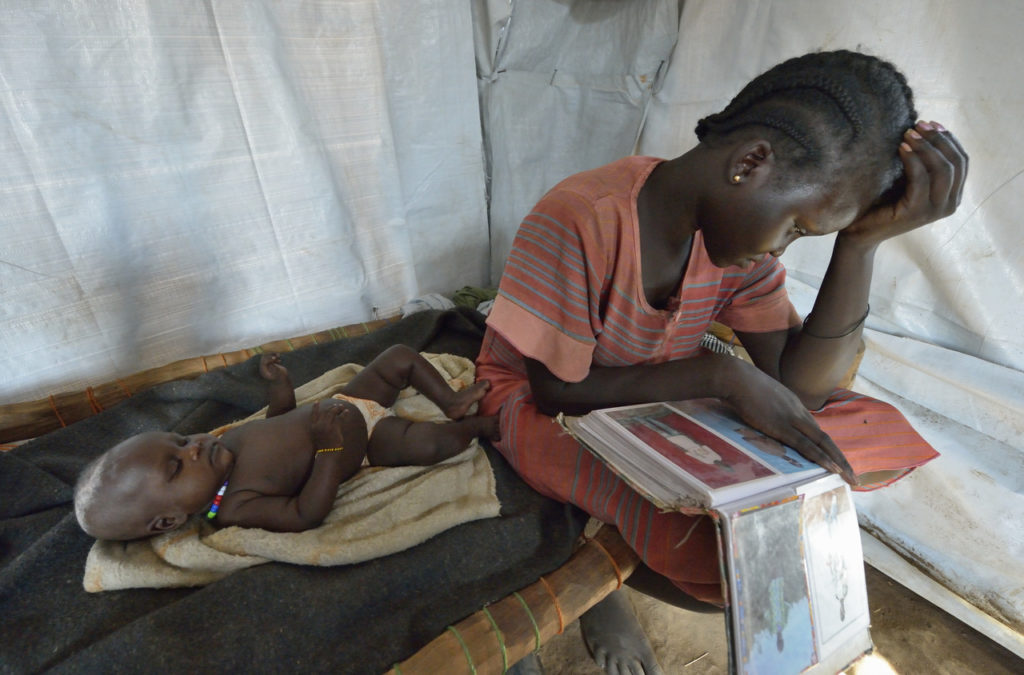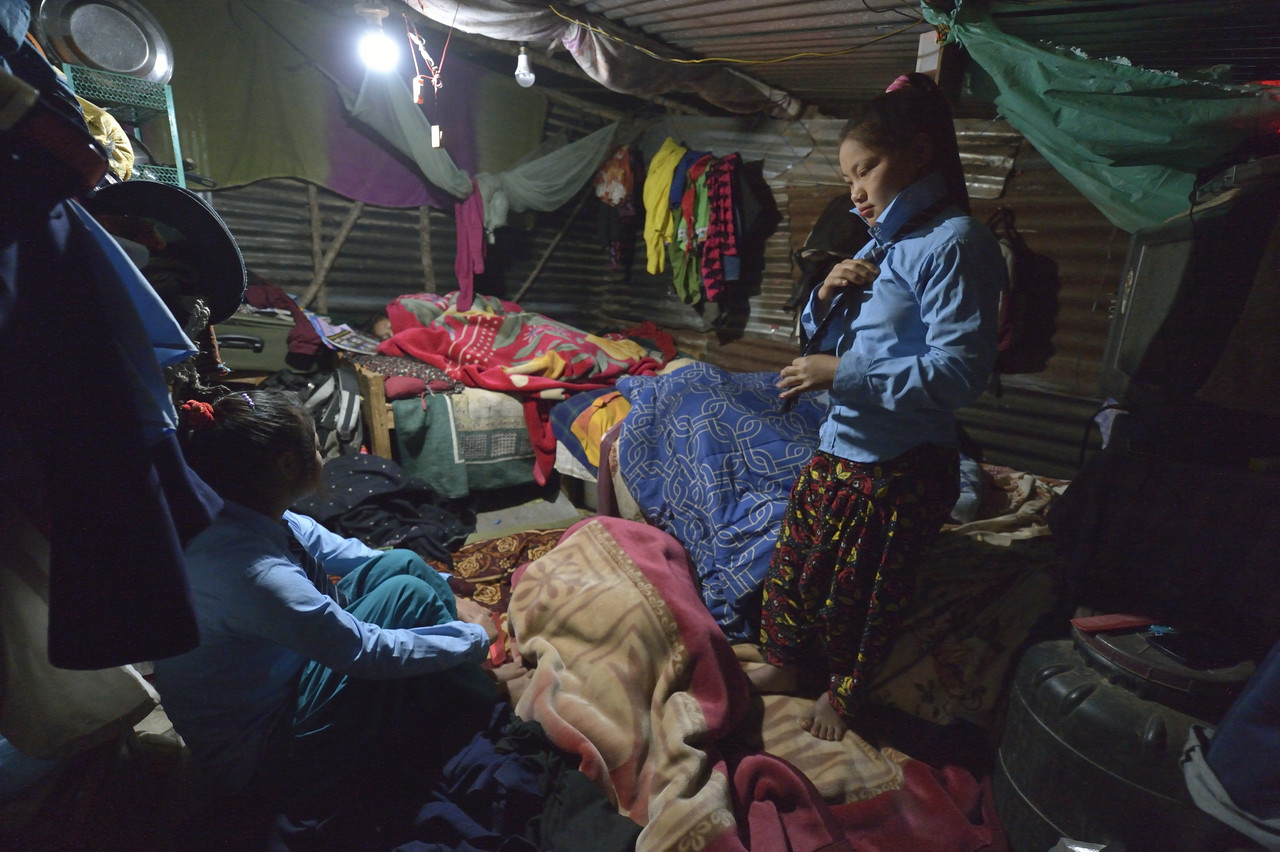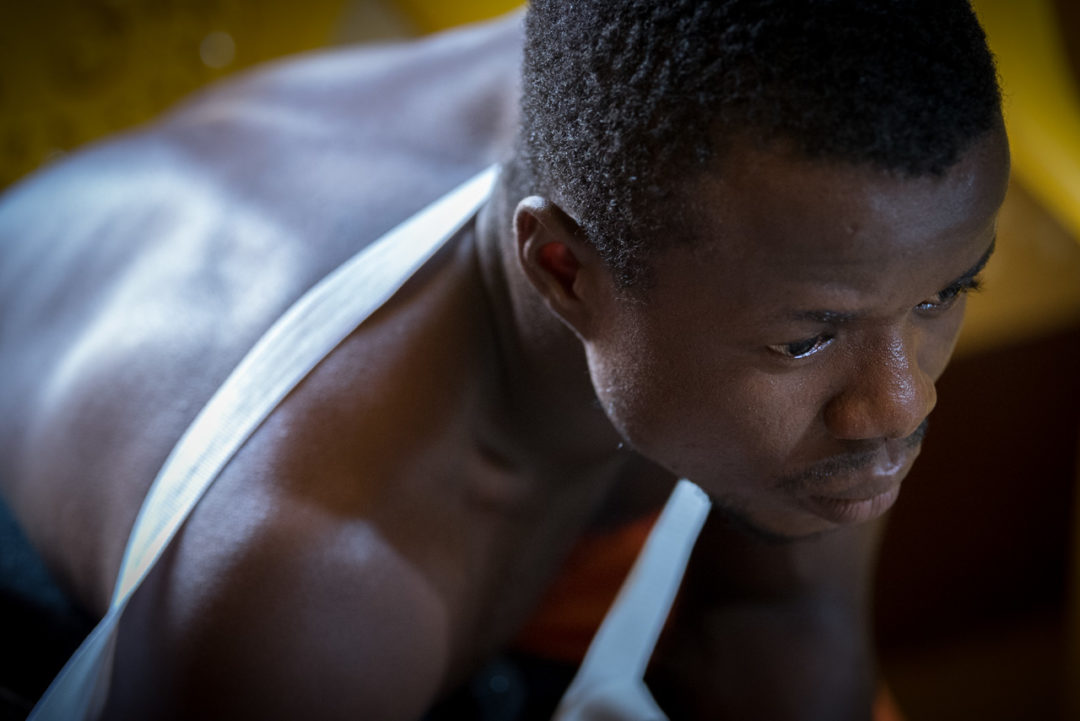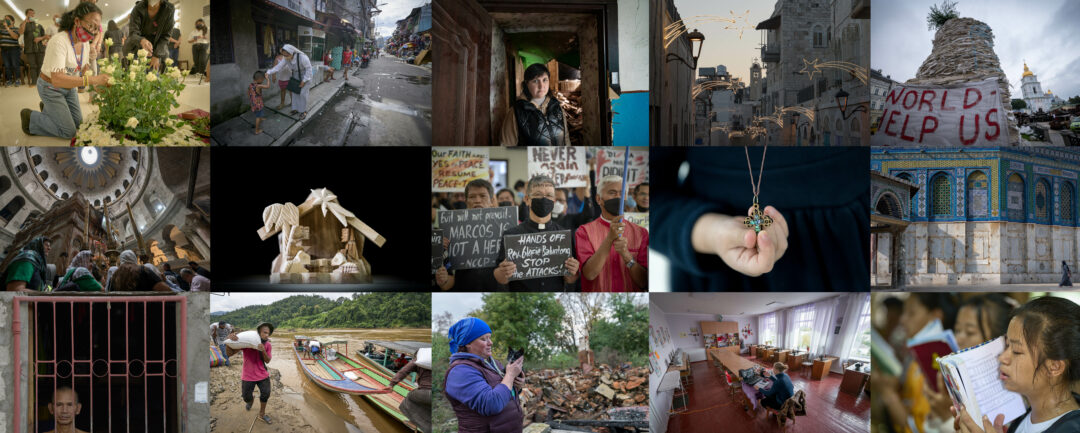Photography can be, at its best, an intimate window into people’s lives. Yet intimacy implies proximity. The war photographer Robert Capa understood that. He said, “If your pictures aren’t good enough, you’re not close enough.” At a certain point, however, getting close can provoke discomfort in the subject of the image, making them change what they’re doing. So where’s that magic line we want to approach and not cross?
I don’t have a clue.
What I do know is that the more we help our subject be comfortable with our presence, the more relaxed they’ll be, the more they’ll go on with the task at hand, the more they will ignore us, and the better our image will be. Getting ignored, as much as that’s possible, is good. In many cases, I want the subjects of my photos to act as if I’m not there. I want viewers of my images to look at my picture and see what normally happens in the life of that person on the other side of the lens. That’s a bit dishonest, in one sense, because of course I am there, and my presence, according to the Observer Effect, inevitably changes things, at least subtly. But I can nonetheless lower my impact on the scene by taking the time and effort to get comfortable, which will translate into the subject getting comfortable enough with my presence that they quit thinking about being observed, despite the click, click, click. Sounds easy, right?
It’s not. But before we delve into some the complexity of getting comfortable, there are some simple things a photographer can do to diminish their impact on a visual image.
One, mind your shadow. As you get closer, the odds go up that you will cast a shadow on the ground. I’ll often step to one side a bit simply to get my shadow friend out of the image.
Two, park the vehicle out of sight. If you’ve shown up in a remote village after several hours of bumping through the bush, your driver will park in the shade under a tree that is inevitably going to be in the background of your shot. But that vehicle isn’t usually there, so I’ll ask the driver to move it. If you explain the reason to the driver, they’ll usually get one step ahead of you and move it proactively or find some good place to hide it. Getting the white vehicle out of the image also mitigates any dynamic range issue you’re likely to have because of that spot of blown highlights. Best solution: leave the vehicle behind. Sleep where you shoot, if security allows it. Otherwise, take a hike until you’re out of site of that white Hilux or Landcruiser.
Three, work by yourself. If you’re in a herd of visitors, someone from your group is likely to wander into your frame. And your subjects will be more distracted by the number of visitors. If you’re working on a photo of two or more people, their eyes will wander around keeping track of all those people, and you’ll often end up with people looking different directions, which can be confusing in an image. The simple solution is not to get stuck with other people. Or even with another photographer. Several times I’ve been in a remote location with another photographer, and unless security mandated sticking together, we would agree to walk off in different directions and meet up later. Both of us ended up with better images as a result. Being alone makes it easier to get comfy with people, and for them to get comfy with you.
The most important element in this discussion, however, is time. Settle in. Quit thinking that you need to be somewhere else. Get comfortable. Good photography takes time.
Photographers will tell stories about getting to know a community first without a camera in their hands. That allows people to get to know them, get comfortable with them, before they introduce the click into the relationship. And that’s not surprising, for the easiest part of photography is pressing a button. The hard part is getting to the right place at the right time with the right people and the right attitude. So some leave their camera behind initially. That’s a luxury I seldom have, however. (Few clients want to pay me to sit around and get a community acclimatized to me.) So the only option left is to schmooze my way into getting people to relax. I’m using schmooze as a positive word here, not in the original Yiddish sense of idle gossip. I’m talking about being authentic and empathetic, as much as that’s possible when you’re jet-lagged and sweaty, standing in the unforgiving and unrelenting midday sun in the middle of a crowd that speaks a language you don’t understand while your stomach is regretting the porridge that smelled so good at breakfast.
Despite all of that, this means making eye contact, saying a few words in whatever language people speak, and smiling or not smiling, whichever is appropriate (this entails some understanding of what’s appropriate). It also means moving slowly. I once shot a funeral in Haiti where there were over 50 news photographers present. I marveled at watching James Nachtwey move around in the crowd. There was a slowness, a gentleness, to his movements, and yet he was always exactly where he needed to be. (He was even gentle when he shoved me because I crowded too close to him when we were both trying to photograph a woman screaming in grief.) Moving quickly, even in someone’s peripheral vision, will attract attention, make you seem threatening, or at least obsessed with your own agenda. Moving slowly will allow you to get away with all sorts of things.
If people feel you’re sympathetic to whatever emotion they’re feeling at the moment, they’re more likely to accept you as part of their immediate environment. If they are laughing and you’re laughing, you’re on the right track. If they’re sad, and they sense that you share their sadness in some way, then they’re more likely to accept you. If they’re engaged in prayer or worship, and sense that you are being respectful, then they may allow you to observe. And if they’re hiding behind a barrier because someone is shooting at them, by all means follow their lead, otherwise they’ll think you’re an idiot. You don’t want them to think you’re an idiot (because that probably means you are an idiot). In fact, you don’t want them to think about you at all.
So you settle in, and let people get comfortable with you. They either forget about you or simply quit caring about you. Whatever works. Best case scenario, they get bored with you.
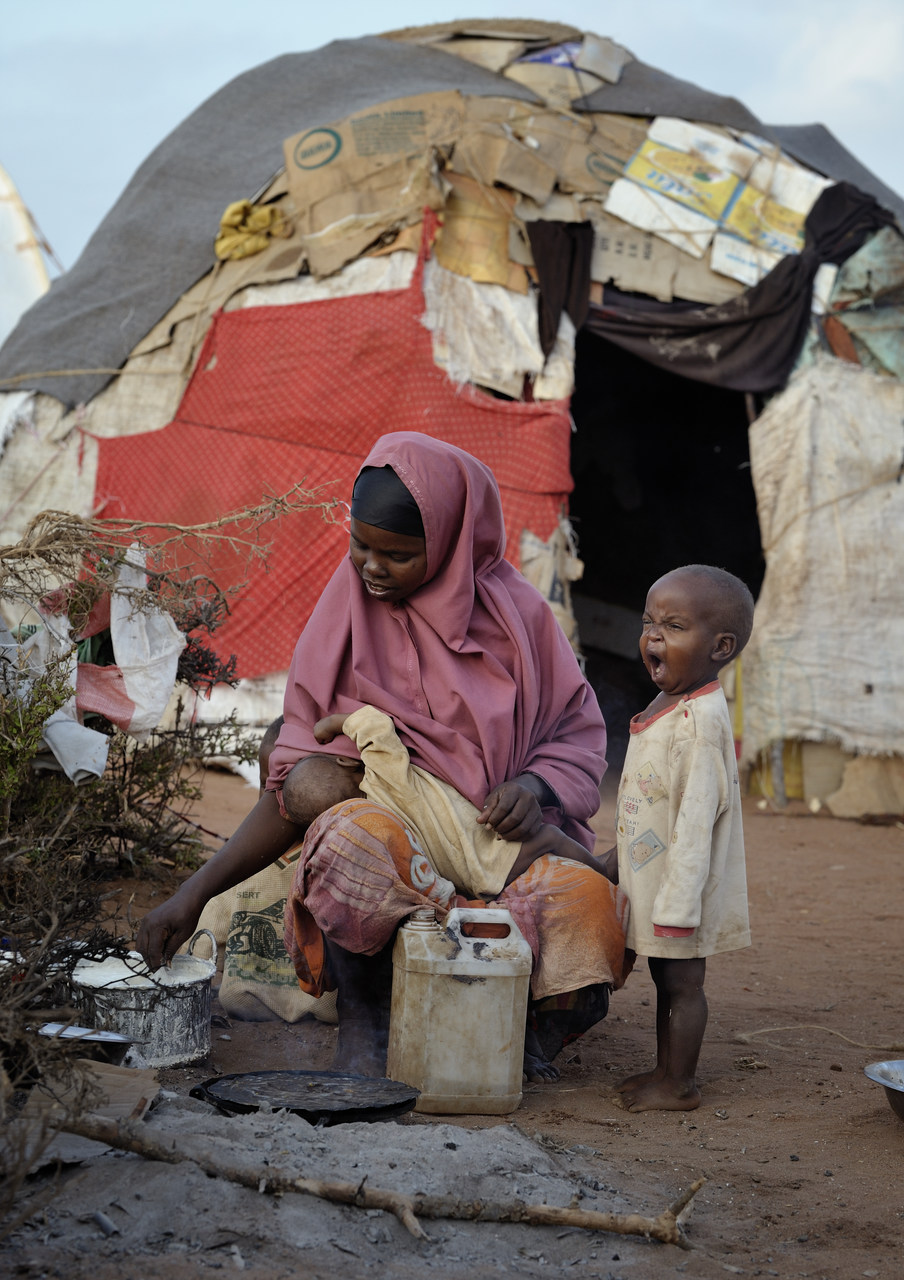
That’s Bashir Aliyona, a Somali refugee boy, yawning. He’s with his mom Kadija Abdi Wadadow and a sibling in the Dadaab refugee complex in Kenya. It’s a huge place, and it’s got zillions of kids who are bored. When they spot a photographer, they see entertainment, and soon there are scores of them walking with you, getting in the way, making dust, being obnoxious (a trait I mastered as a kid so I recognize it quickly), literally making it impossible for you to get comfortable–unless, of course, your assignment is taking photos of frenzied hordes of children.
One way I worked around this problem was to head to the very edge of the Dadaab camps early in the morning before most of the little darlings were awake. One morning I found Sagul Mohammed Omar. She and her five children had just trekked across the desert from Somalia, and they were right on the edge with few others around. So I interviewed her and then hung around for two or three hours, until she and her kids quit thinking about me. It took a while, but it was worth it. (By the way, the first photo, if I recall correctly, was taken by climbing on top of the vehicle because I wanted to show the landscape. So I got the vehicle out of sight by getting it underneath me.)
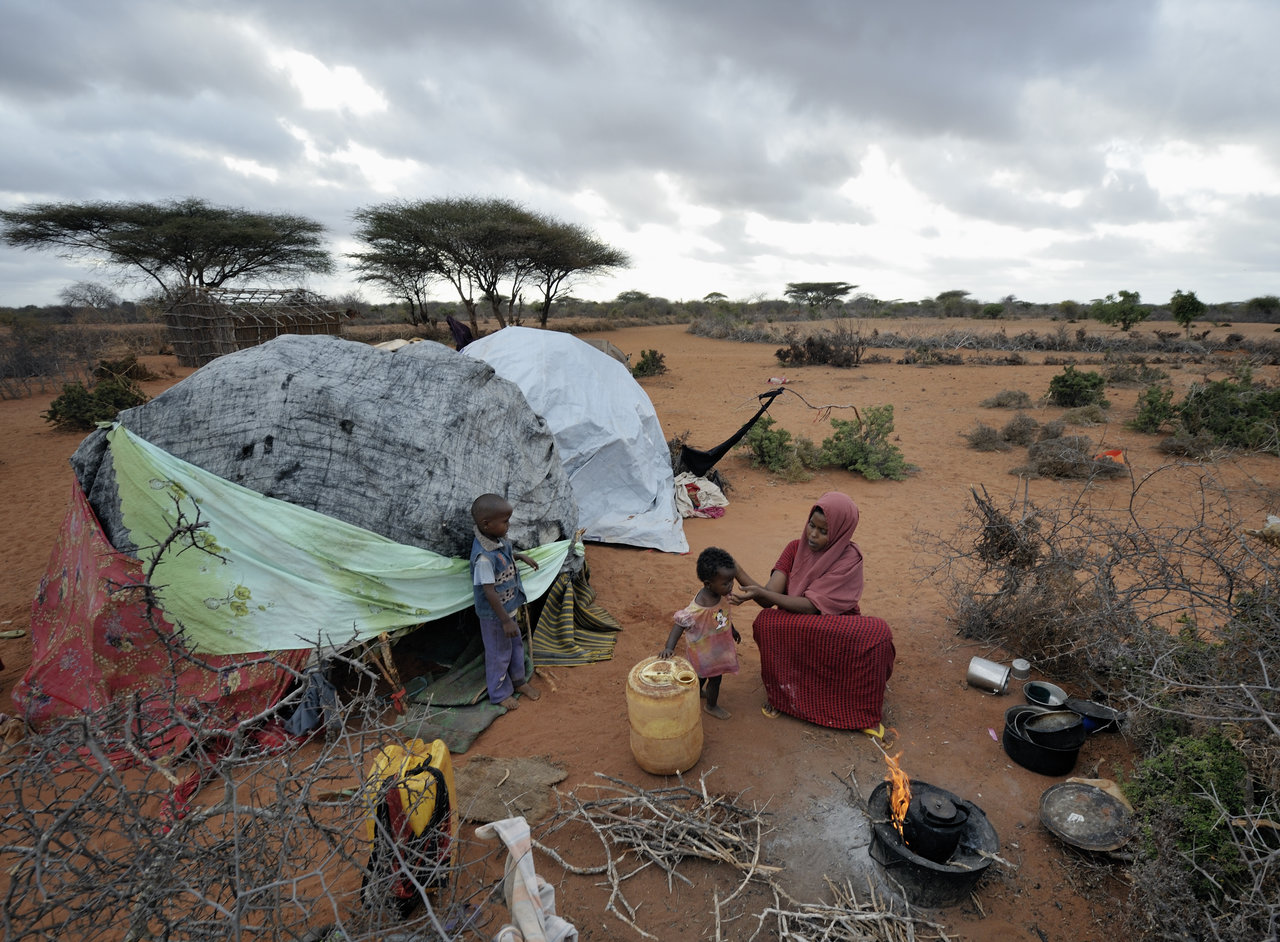
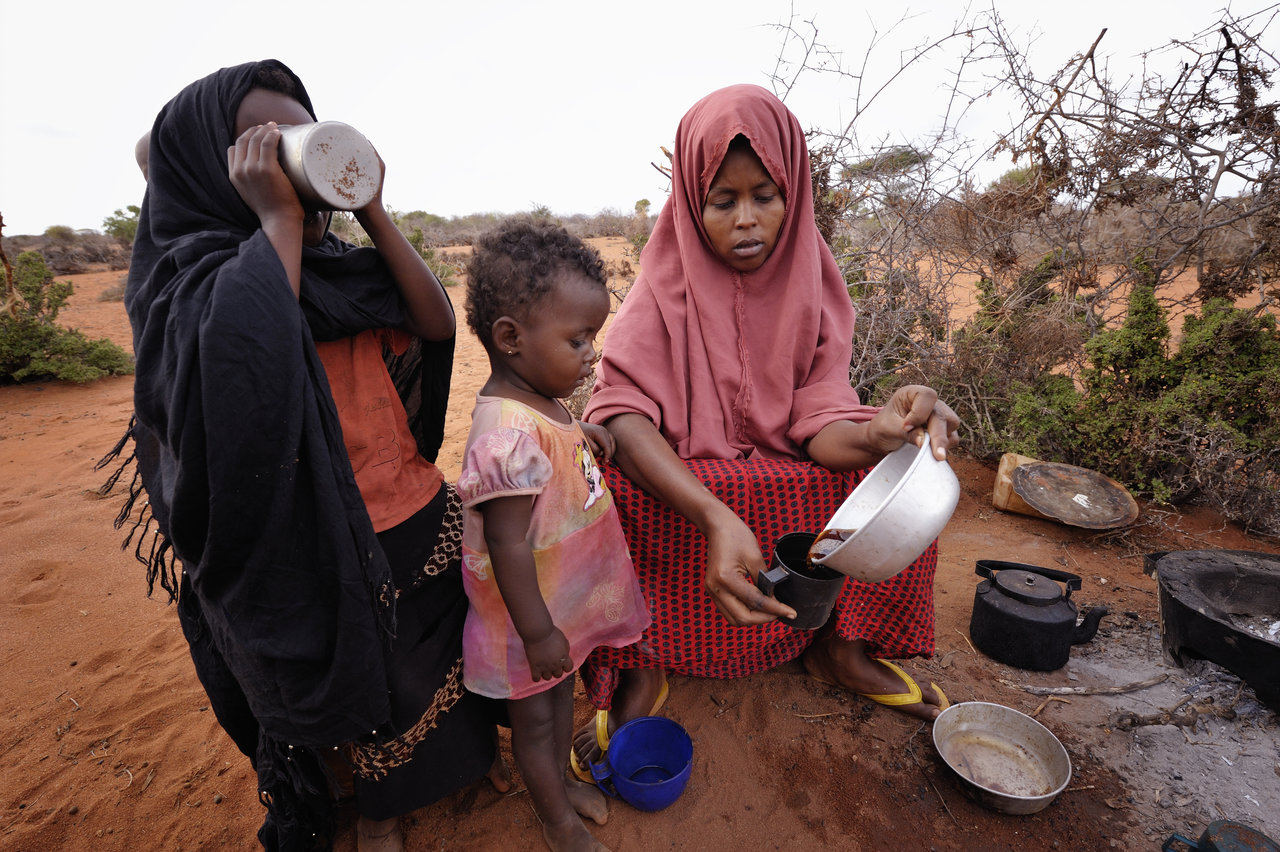
Here are some Arrow Boys on patrol in South Sudan in 2010, along the border with the DRC, where the Lord’s Resistance Army had been making raids. Villagers, frustrated with the lack of an effective response from governments, decided to form their own militias to defend themselves. They took to the forest armed with mostly bows and arrows to combat a ruthless army equipped with modern assault weapons. We were introduced by some church workers who they knew and trusted, and I spent several hours interviewing them. With that baseline of trust, I invited myself along with them on patrol. Simon Peter Gamana (right) and Charles Gorden did exactly what I wanted them to do–they mostly forgot about me–which was made easier by the fact they had someone else to worry about.
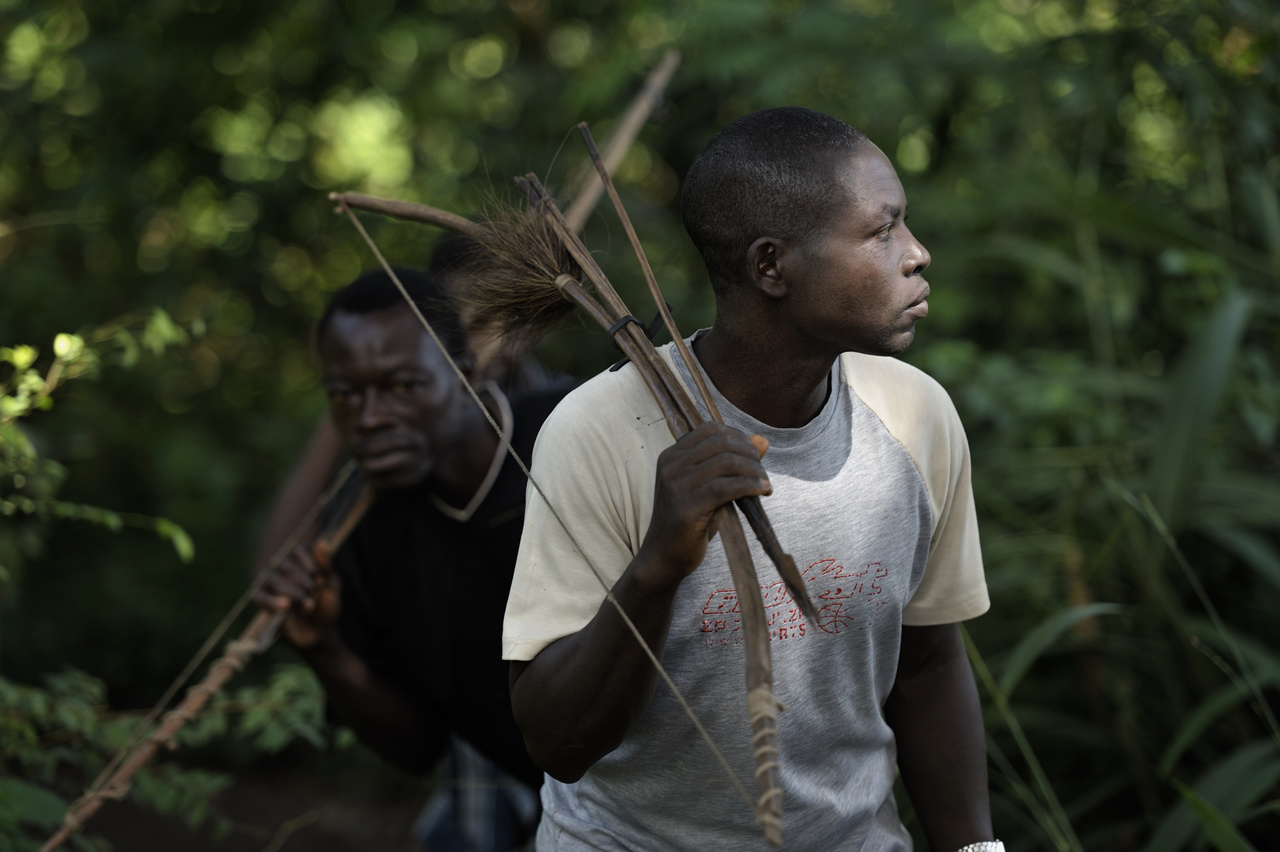
In 2012 I was documenting the life of Roma families in Belgrade, Serbia. The families, many of whom survived by recycling cardboard and other materials, were under constant threat of eviction in order to make way for new high-rise office buildings. I had spent some time interviewing Milan Pesic, who told me about earning money as a member of a Roma band that played at weddings and other gatherings. I was in no hurry, and delayed my departure from his little shack as long as possible (it was also really cold outside). One of his kids told him he should play his french horn for me, so he did, and as we talked quietly afterward his youngest child, Boban, pushed his way in and started trying to play it himself. [I later revisited this family in a new home.]
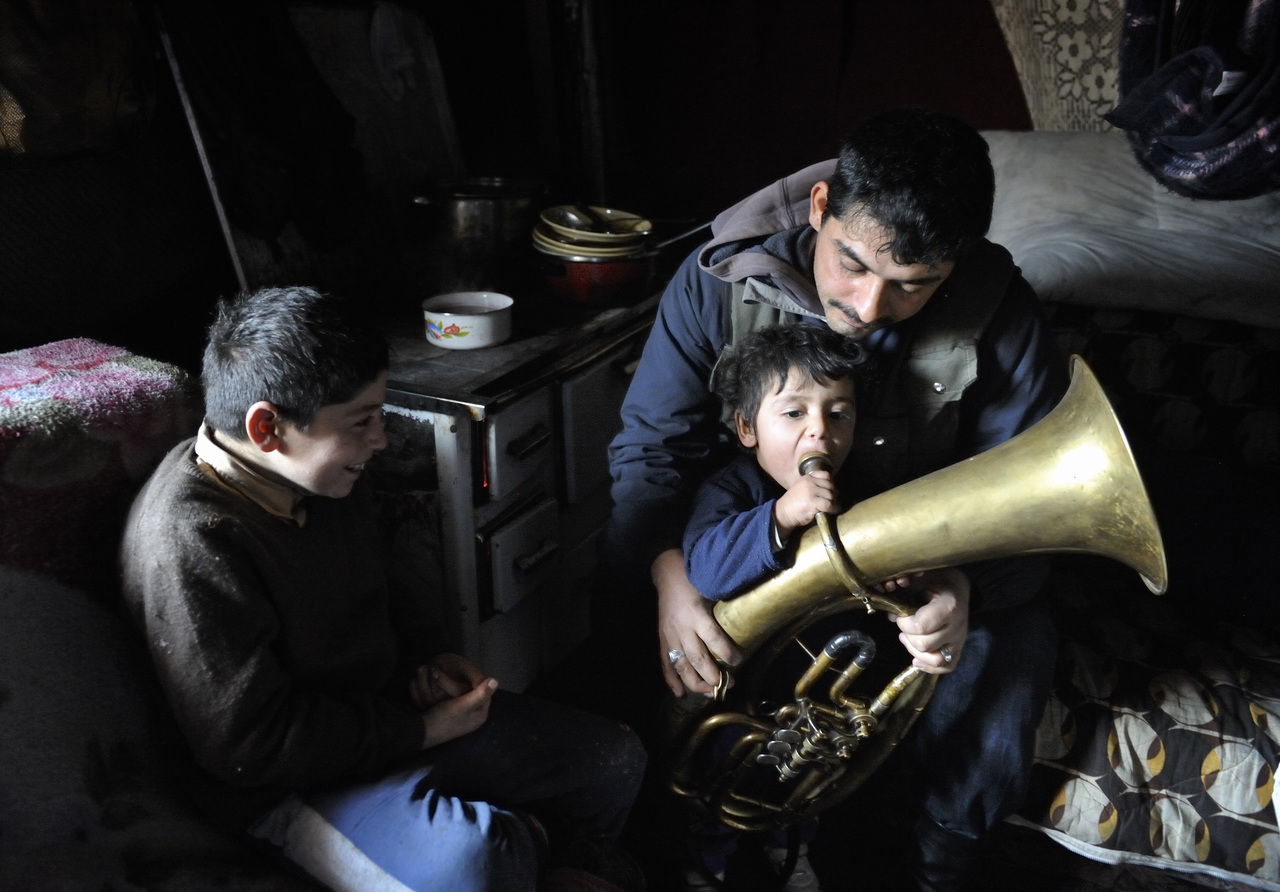
The same getting comfortable dynamic was at work in capturing these images of boys playing cards and a family at home in Cambodia, then Cindy Moon, a United Methodist missionary in Thailand, practicing patience as she waits for hours with 9-year old Play Nata to see a dentist.
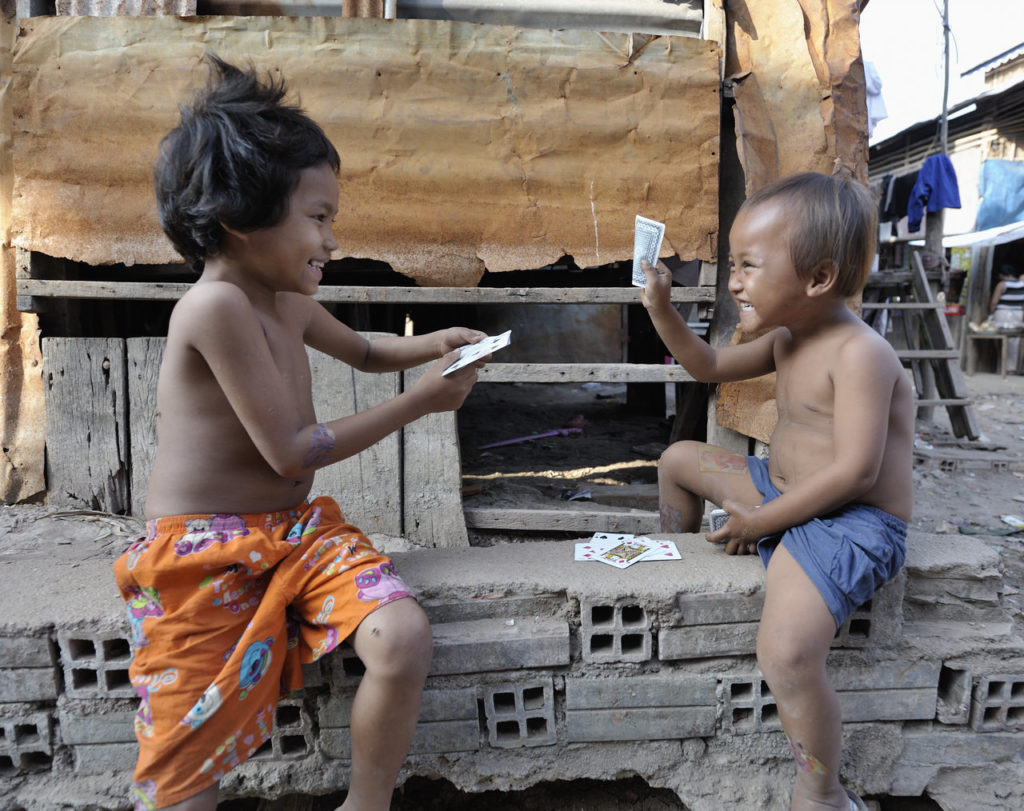
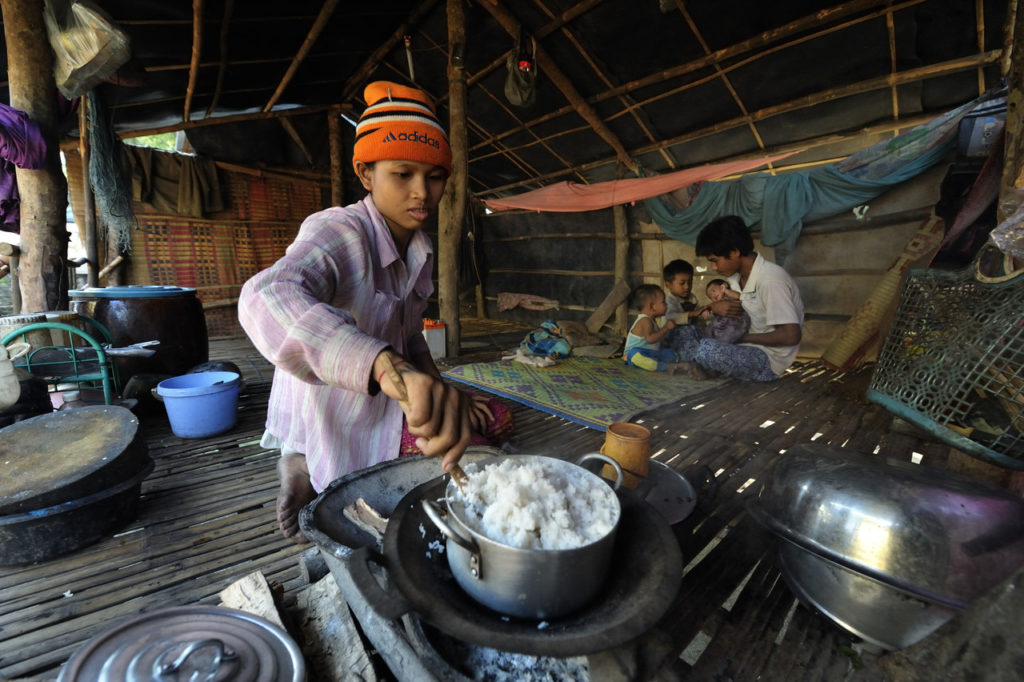
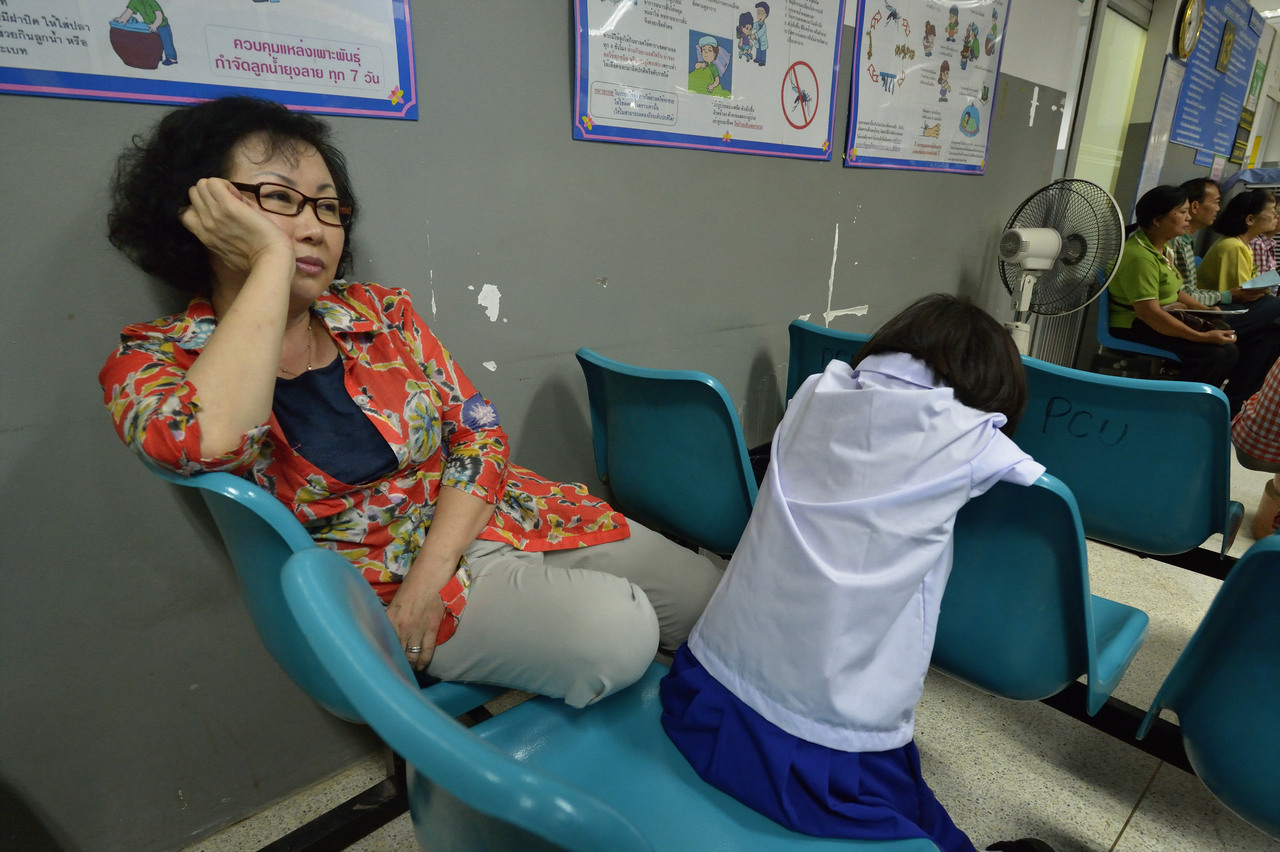
Some activities may be less conducive to people getting comfortable with your presence. I was in Gaza working on a story about the effect of Israel’s policies on the health of women, and wanted to shoot a mammogram. (Breast cancer rates are several times higher among Palestinians than among Israelis, in part because Israel blocks the introduction of medical equipment.) When I told my male translator my idea, he said no way. (If you’re not aware, Gaza has a very conservative Muslim majority.) I pushed and schmoozed, finally convincing him to try. So when we were in a hospital shooting some other images, we asked the administrators about the possibility. They were open to the idea, but assured me that no women would agree to it. So I schmoozed some more, and I talked with Saeda Jondia, the x-ray tech who conducts the mammograms. She said she was not optimistic, but she’d try. She disappeared into the waiting room for several minutes, finally emerging with permission from Ibtesam Al-Zein to let me accompany them during the procedure. In this case, it was not me but someone else–Saeda–who got the subject comfortable with my presence.
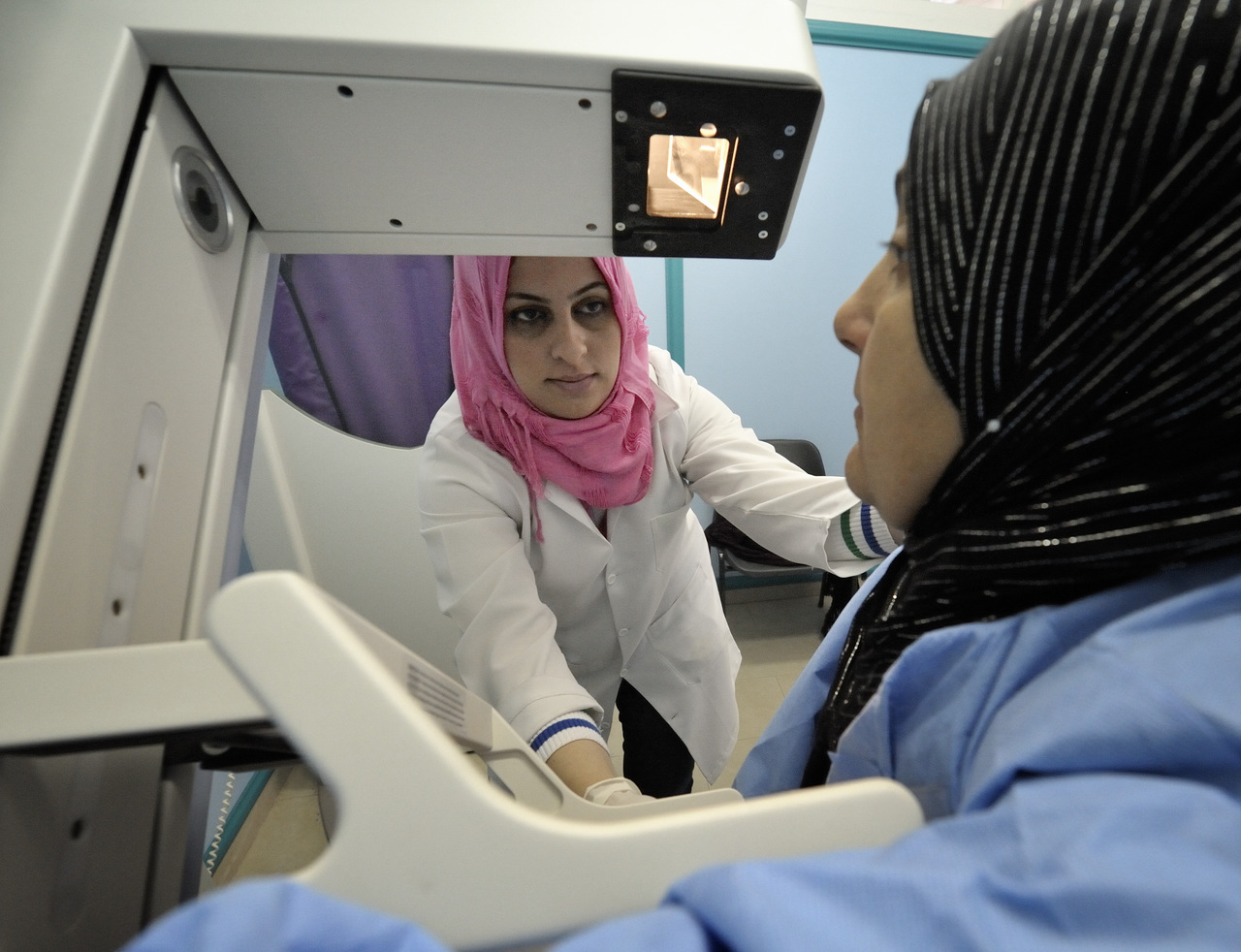
Prayer is perhaps one of those moments when people are more likely to feel invaded by the presence of a photographer, but, again, taking the time to get to know people, and helping them understand why you’re there, will often encourage incredible hospitality, including the invitation to document their intimate religious life. In the next image, two Muslim women–Farmah Adam Ibrahim (right) and Sit-Eldoma Atiya–pray outside their hut in a displaced persons camp in the Darfur region of Sudan. In the second image, a K’iche’ Maya indigenous priestess prays in San Andres Xecul, Guatemala, during a traditional Maya spiritual ceremony. (This photo was used on the cover of a book I wrote about the role of faith groups in the Guatemalan peace process.)
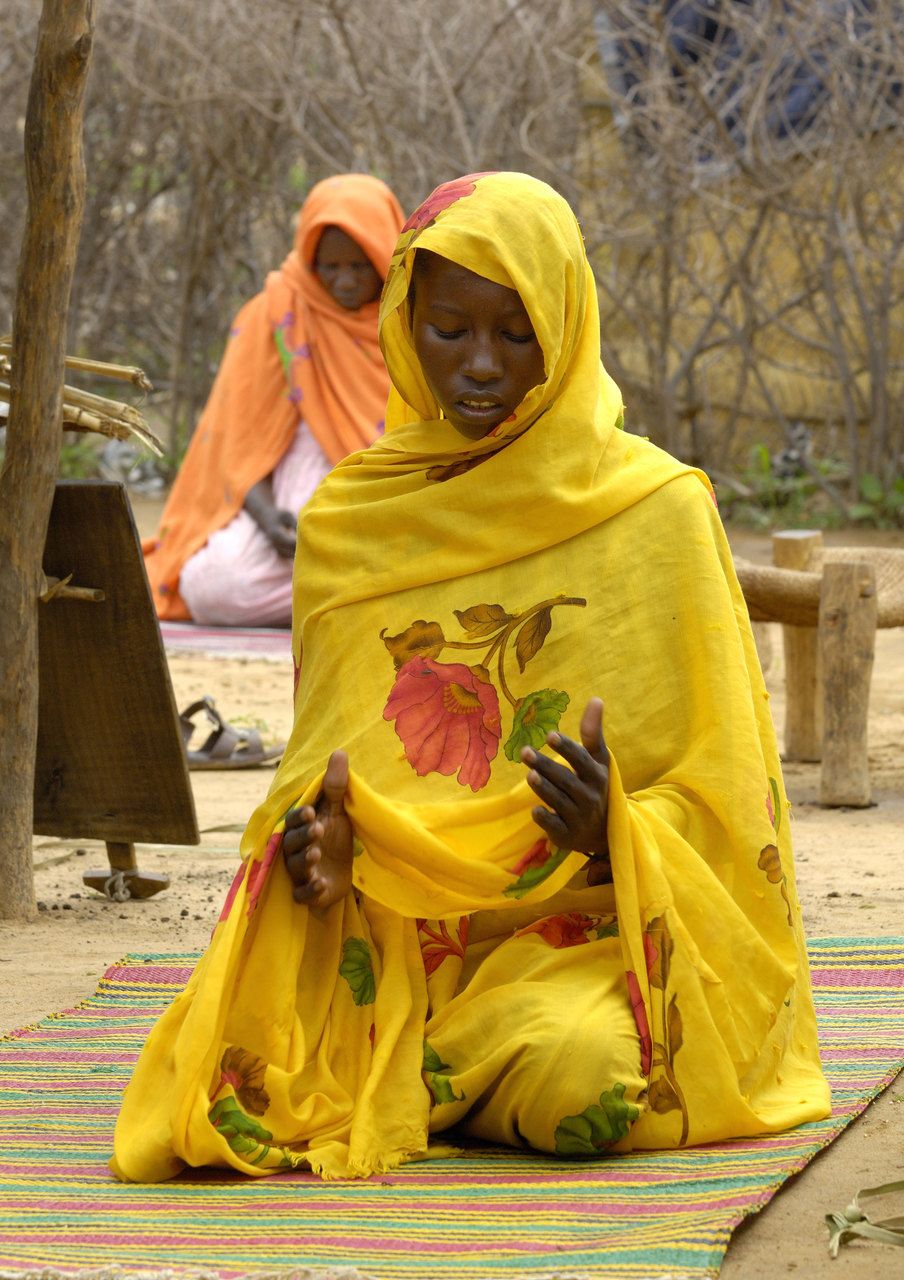
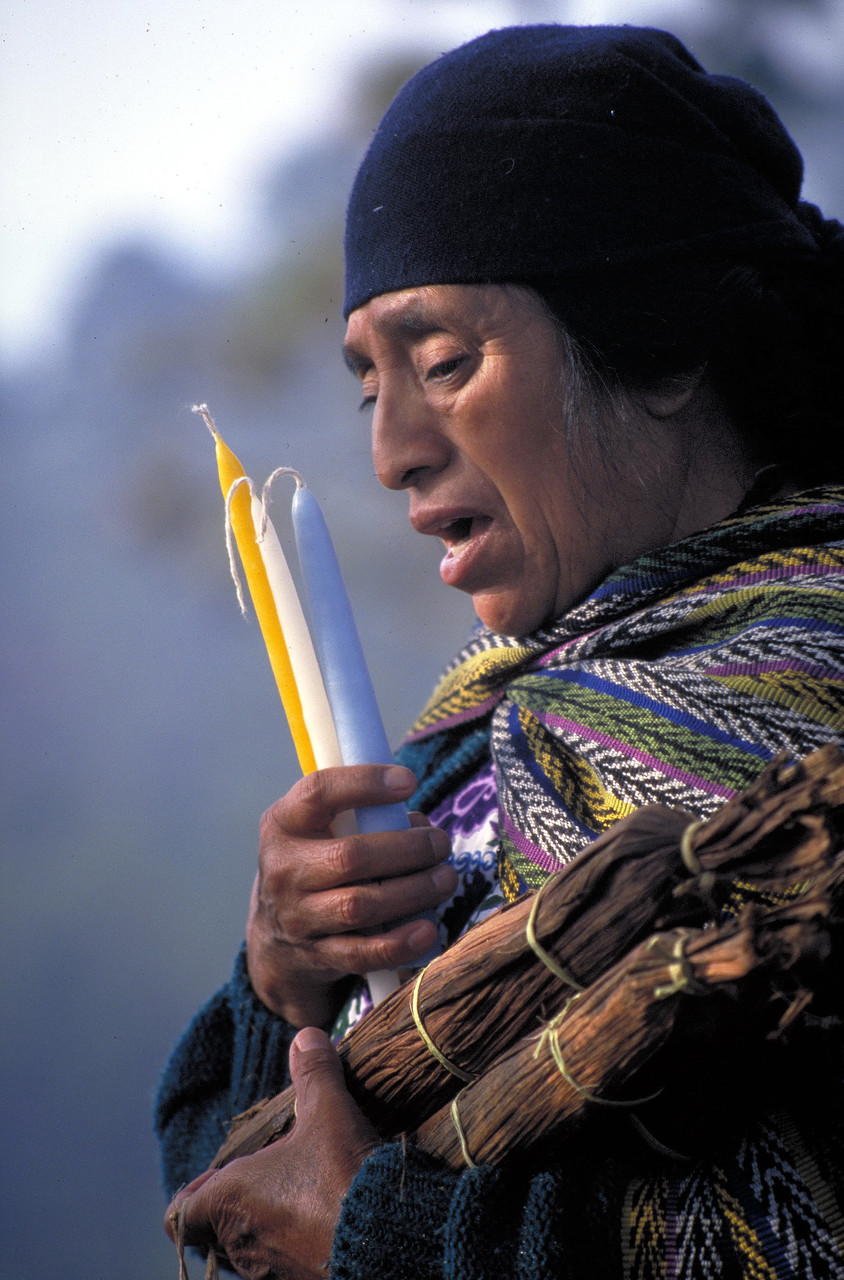
This next photo of Carlos Martinez, a murdered Honduran peasant, was possible for two reasons. One, I was present in the community when he was murdered, and thus I could accompany the family to the site of his murder to recover his body. Two, I had already been there for several hours talking with folks. It was palm oil plantation that the workers had seized as part of a long dispute with the country’s wealthiest man. They have armed guards that keep people out, including the police and army, and getting inside required some, wait for it, schmoozing. Capturing this image, which I did by reaching with my camera over people’s heads as they prepared his body for burial, was only possible because people had grown comfortable with me. And trusted me.
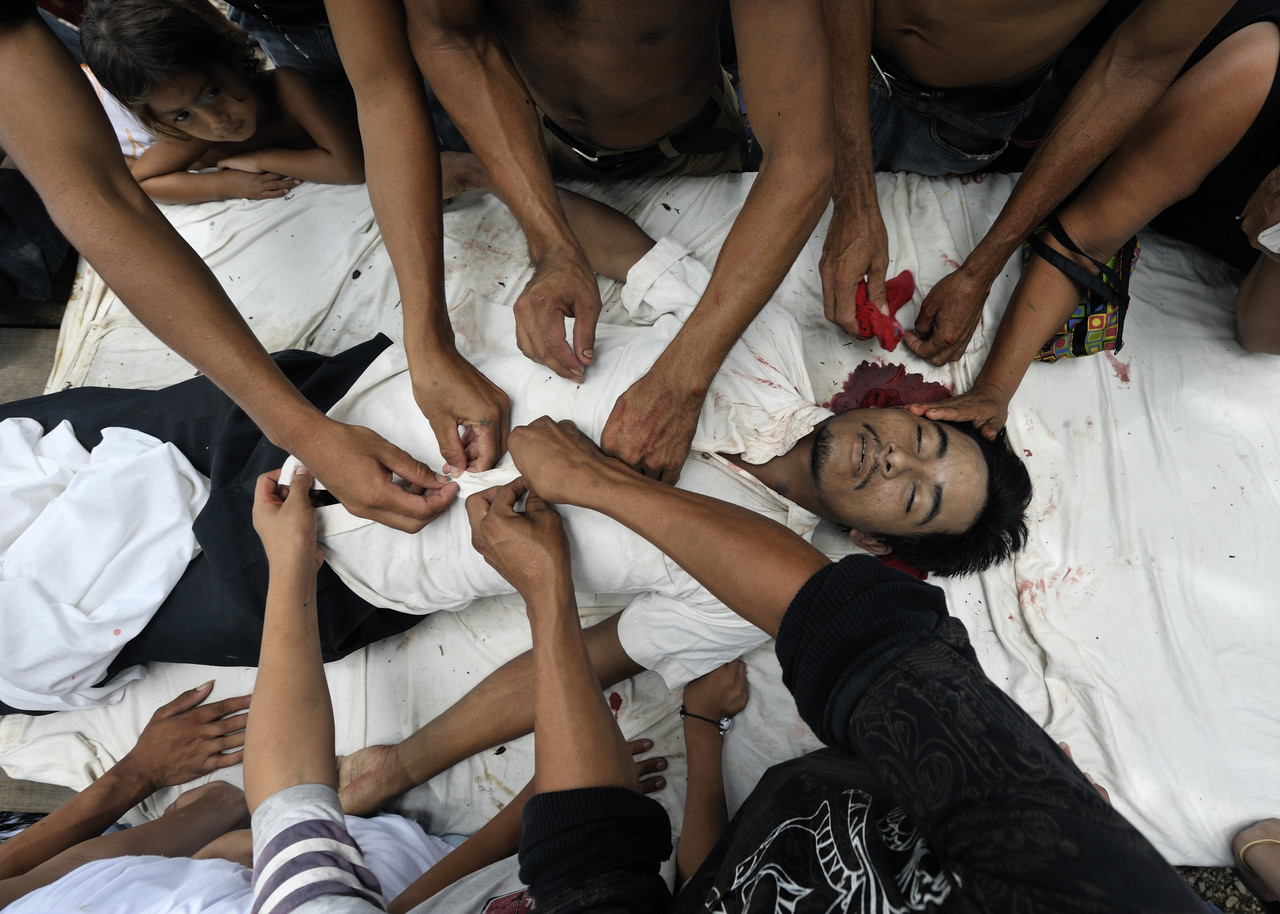
Working around kids usually means just out-waiting their attention span, and soon you’re part of the background noise. Here are two images from an assignment on urban refugees in Egypt, the first of kids in class and the second of some getting ready at home in the morning.
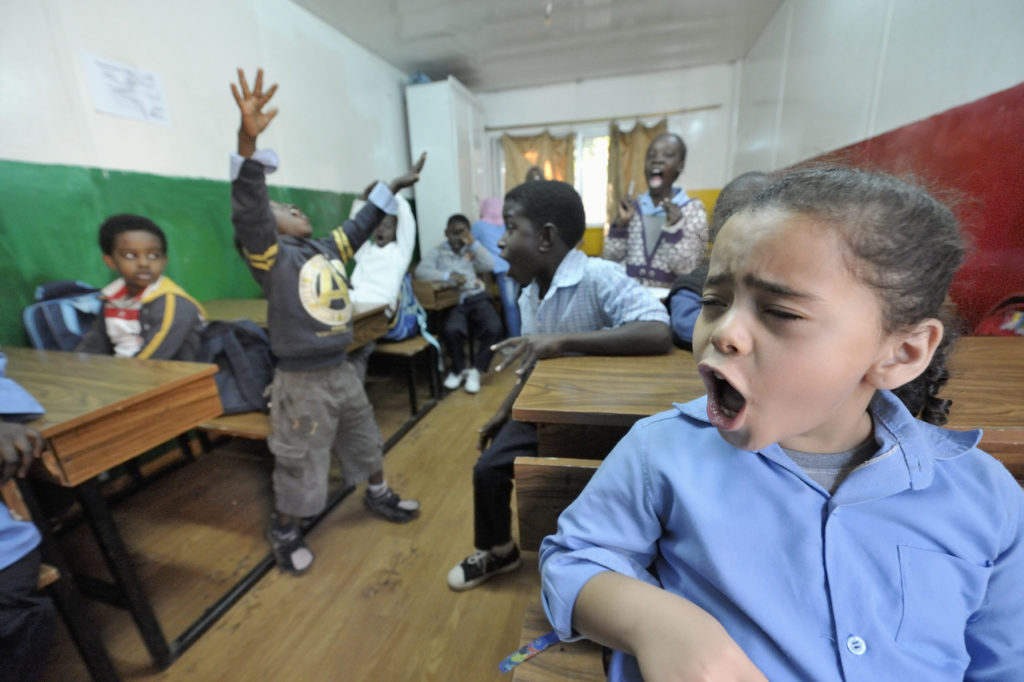
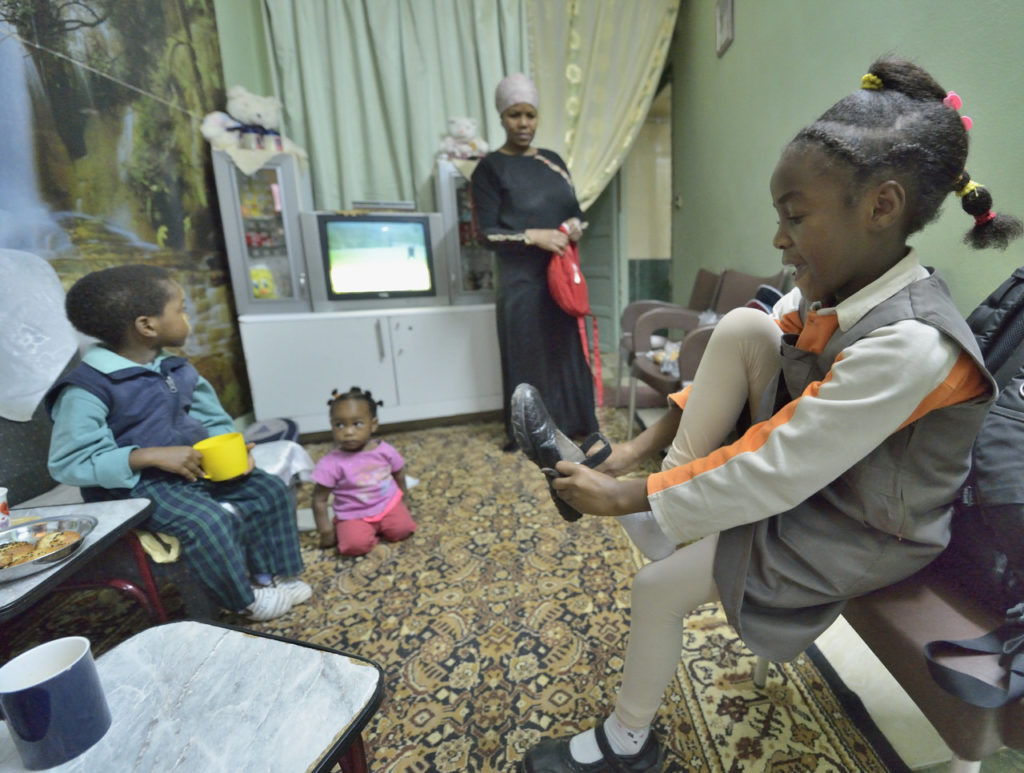
Even with portraits, where there’s no pretense about the photographer’s presence, comfort is still an issue. While covering Libya’s civil war in Misrata, I went to photograph Malake Ashama, a beautiful five-year old who was playing with her toys in her bedroom when a Grad rocket fired by government forces slammed into her home. A brother and sister were killed, and she lost a leg. When I first arrived at her home, her father, Mostfa, was very welcoming, but the girl was quite apprehensive. She was afraid of me. Only after a while, when I was literally on my way out the door with my cameras packed away and in a rush to catch a boat ride to Benghazi, did she relax enough for me to make a usable image. I quickly put my bag down, assembled a camera and lens, and clicked off three or four quick images. It was enough.
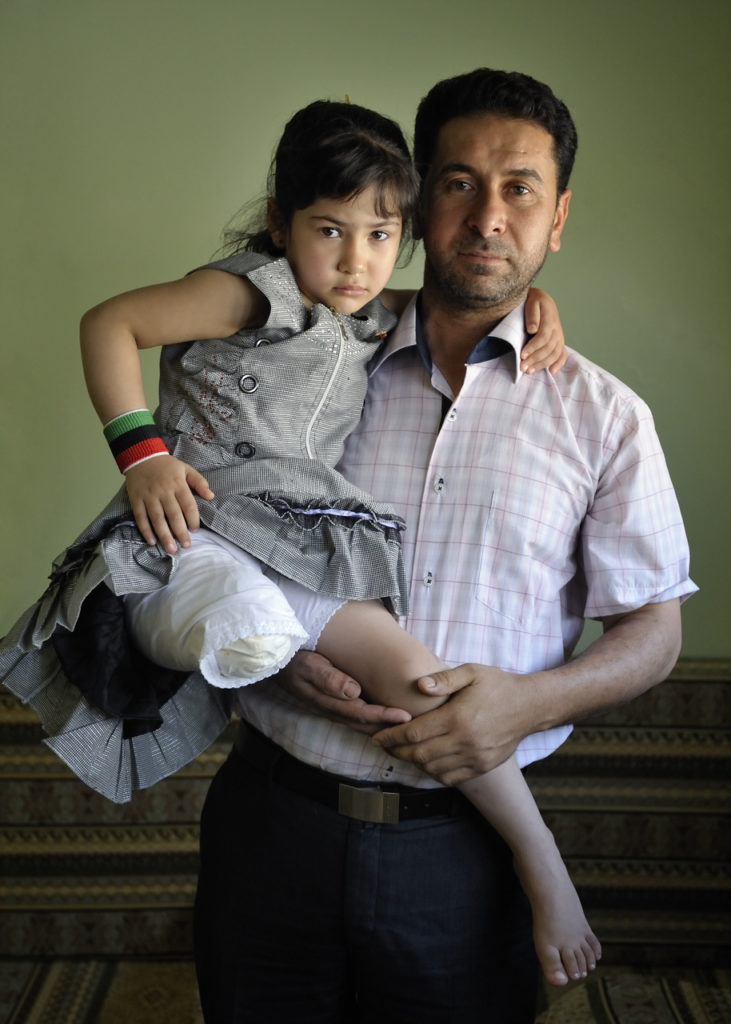
Fortunately it’s not always up to my charm. It’s often a matter of whom I’m with, and how the trust that people have in them is transferred to me. In the next image, Rodrigo Mello, an outreach worker for the Street Children Project in Sao Bernardo do Campo, Brazil, is talking with 11-year old Gabriel Acevedo Silva in the doorway of the boy’s home as his mother, Elismar do Nacimiento Acevedo, listens. You can see another Project staff member, Leonardo Duarte, in the mirror on the wall in back. I got into this family’s home because Rodrigo and Leonardo introduced me and told people they could trust me (or ignore me, perhaps it’s the same thing). A similar process is at work in the following photo, where I’m accompanying a group of mothers in Manila. It’s an image of Rafaela Valencia exercising the legs of Susan Dison’s 15-year old daughter Susein, as Dison’s 7-year old son Apo plays an electronic game in their crowded home on the second floor of a very poor section of the Malate neighborhood. They are members of Kaisahan ng Magulang at Anak na Maykapansanan, a mothers’ group that carries out community based rehabilitation with families which have members with disabilities. Susein has cerebral palsy. When I started shooting, Apo kept looking at me, which worked against a good image, but ultimately his game proved more interesting than me. Yes.
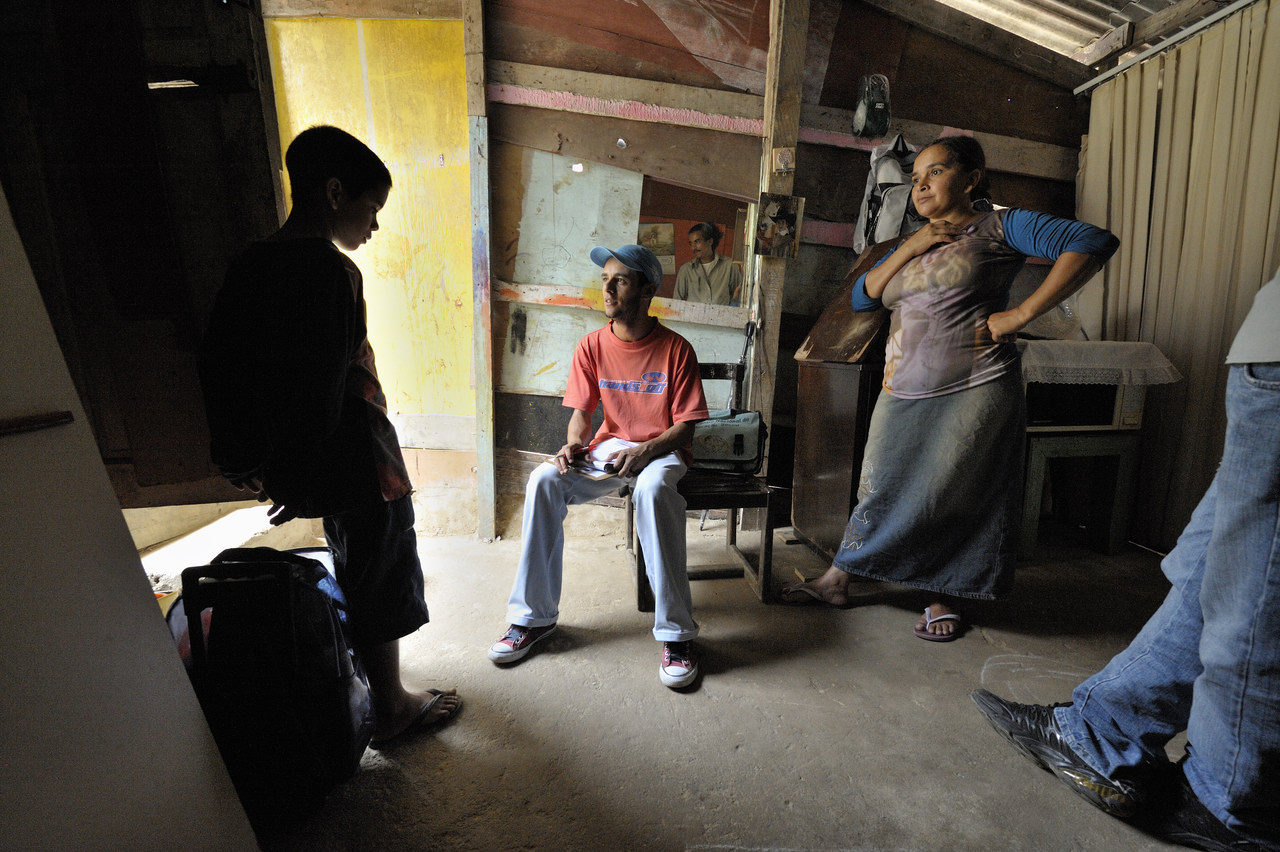
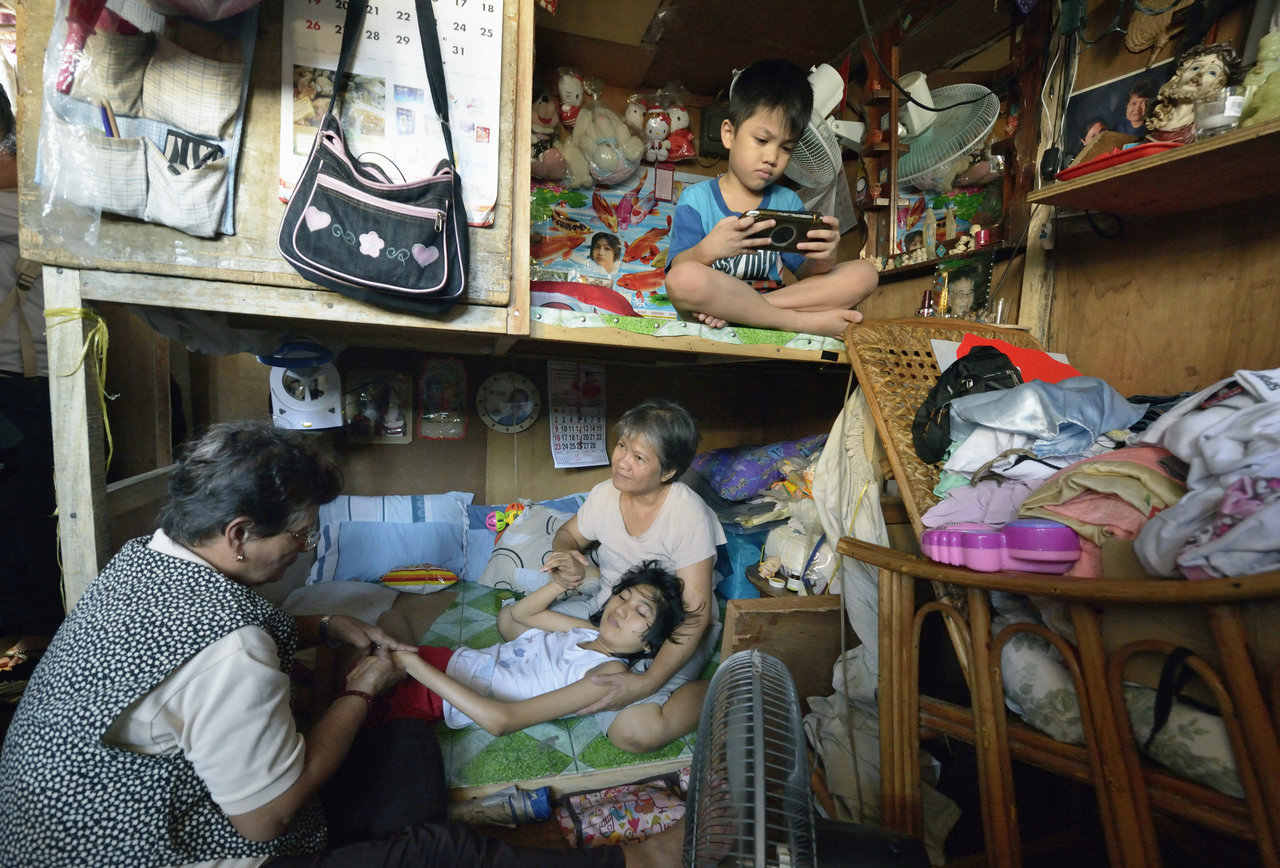
I could go on and on, but I think you’re getting the idea. So let me end with a woman I found inside a tent in an informal camp for people displaced by South Sudan’s civil war. Nyanthem Mayol is staring at photos of her relatives while her baby daughter Sara sleeps at her side. They had spent several weeks walking through the bush after fighting broke out in their home town of Bentieu, arriving in Ajuong Thok with hardly anything, though Nyanthem still clung to her book of photos. It was her only link to loved ones she may not see again, to a life that, for now, she has lost. Perhaps she was so depressed that she didn’t care if I was there. Or perhaps letting me photograph her was a way of sharing her pain, and this alleviating the burden. I don’t know, but I am thankful to her for the gift of letting me photograph a very private moment.
Images can have amazing power, whether it’s to excite, to illumine, or to console. That power is accessible to us when people grant us the incredible privilege of coming into their lives for a few moments. We can do a variety of things to encourage them to get comfortable with us standing there, but what ultimately makes the moment happen is their incredible hospitality, their willingness to lovingly accept us no matter how annoying we are. Capturing images like this isn’t the result of manipulating people with a handy bag of photographer tricks, but rather of humbly opening ourselves to receiving grace from another.
